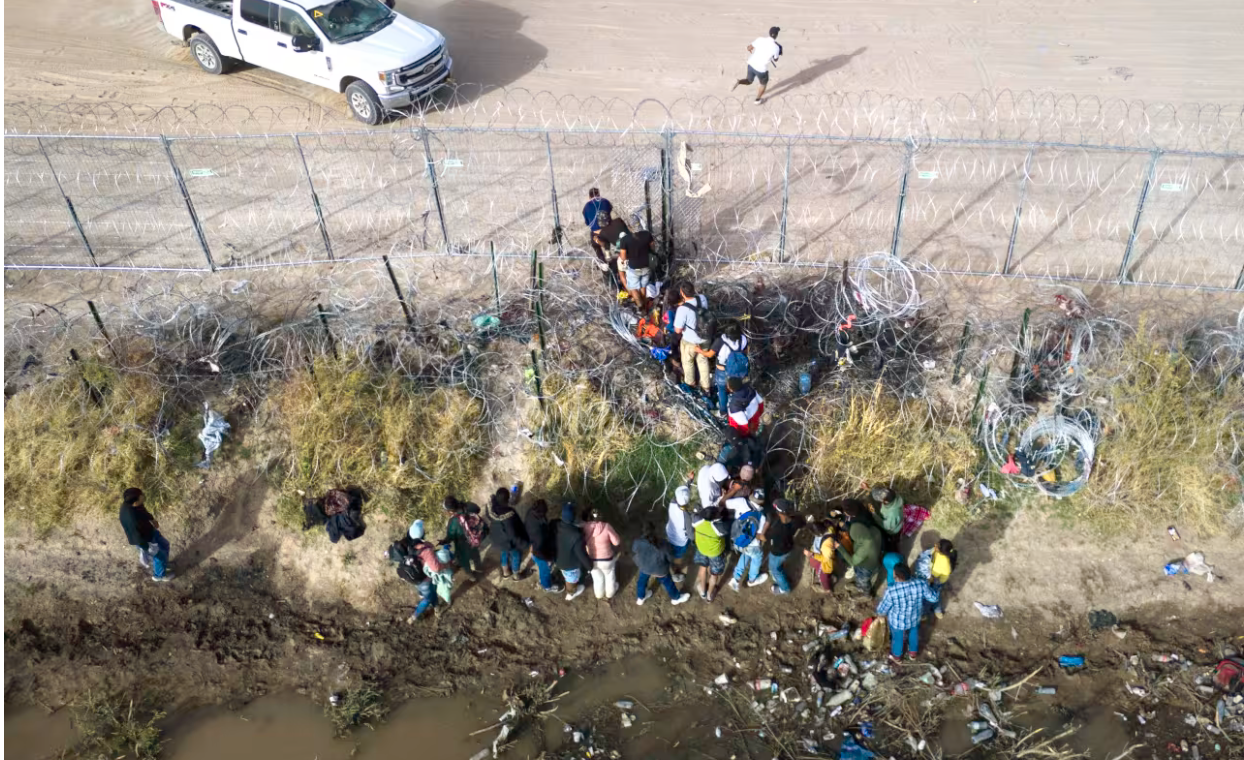By: Walter Russell Mead – wsj.com – April 1, 202
The U.S. isn’t the only place where border security is a hot political issue. The Dominican Republic is building a 250-mile wall across the island of Hispaniola to seal off its border with Haiti. Migrants crossing the English Channel have become a political challenge for Prime Minister Rishi Sunak’s beleaguered Conservatives in Britain. From Sweden to Spain, far-right anti-immigrant parties appear poised to make big gains in June’s elections to the European Parliament.
Since 1970, when only 4.7% of the U.S. population was born outside the country, the percentage of foreign-born residents has grown. In 2022, the Census Bureau estimated that 13.9% of the population is foreign-born, and that share continues to rise. The last time the foreign-born percentage reached comparable levels, Congress ultimately passed the 1924 Johnson-Reed Act and immigration from the Eastern Hemisphere plunged by more than 90%.
The early 20th-century crackdown on migration wasn’t only an American phenomenon. In 1900 there were almost no restrictions on immigration anywhere in the world. By the 1930s, there were almost no places where immigrants were welcome. One by one, countries in Europe and Latin America slammed their doors shut.
Then as now, technological and demographic forces drove levels of migration that touched off a backlash. Historically, migration was limited by mobility. Travel by land meant walking or at best riding on horses or in carriages or carts. Crossing the Atlantic meant long voyages in small ships. The Industrial Revolution changed all that. Railroads crossed Europe, and trans-Atlantic fares dropped as steam-powered ships carrying 1,000 or more people crossed the ocean in less than a week. Transporting people became a big business, and as rail and steamship companies vied for potential migrants, competition drove fares down. All this happened as European populations exploded and the mechanization of agriculture forced many rural workers to seek their living in cities.
A similar mix of forces is powering today’s global migration surge. Travel by air and road became dramatically cheaper in much of the world in the last generation. Populations are rising in many poor countries, and the need for agricultural laborers continues to fall as mechanized agriculture replaces subsistence farming in much of the Global South. Large business networks now help migrants cross borders—with or without papers.
Three new factors are also at work. Low birthrates in much of the industrialized world create demand for immigrant labor. Wars and civil strife are driving tens of millions of refugees from their homes across much of sub-Saharan Africa and into the Middle East. And cheap smartphones give billions of people in poor countries clear if sometimes misleading information about the disparities in living standards between, say, Somalia and Sweden and keep immigrant communities in Europe and North America in touch with friends and families left behind.
None of this is about to change. Advanced industrial societies are going to need skilled and unskilled immigrants for the foreseeable future, but their citizens are legitimately concerned about the social and economic consequences. Unless voters believe that policymakers have addressed these concerns, the pressure for draconian legislation will grow.
In both Europe and the U.S., the first step must be to regain control over the borders. Large numbers of illegal border crossings raise legitimate public concerns about crime (including terrorism) and reduce support for immigration. Whether the focus is the Mediterranean or the Rio Grande, border enforcement must be, and be seen to be, effective. Potential migrants must come to believe that absent legal authorization, their chances of crossing the border are low, and that even if they get in, their chances of deportation are high.
Policymakers must also develop sustainable immigration policies. These might include annual caps on total entrants with clear paths for skilled and unskilled workers. Asylum laws must strike a reasonable balance between compassion and political reality.
Western leaders’ failure to control their borders and to develop sensible immigration and asylum policies may be the most important single force empowering far-right movements on both sides of the Atlantic. To reverse the drift toward authoritarianism and illiberalism, and to foster the sustainable immigration our economies need, nothing matters more than getting the border right.
To see this article in its entirety and to subscribe to others like it, please choose to read more.
 Listen Online
Listen Online Watch Online
Watch Online Find a Station in Your Area
Find a Station in Your Area








 Listen Now
Listen Now Watch Online
Watch Online
